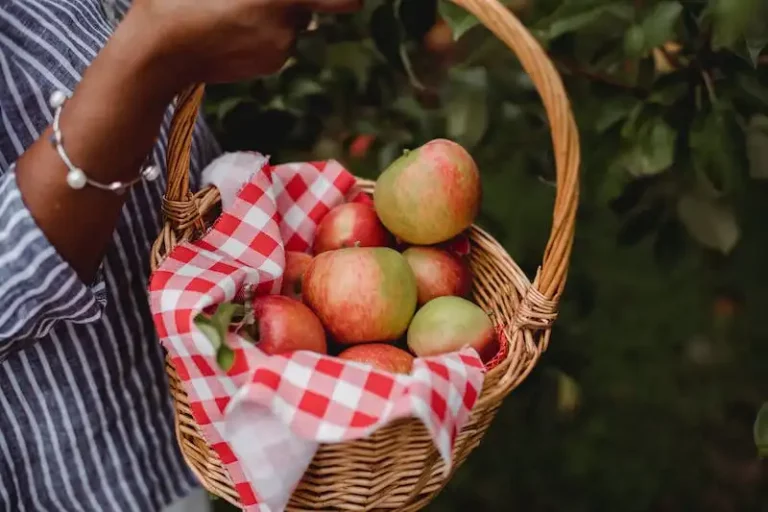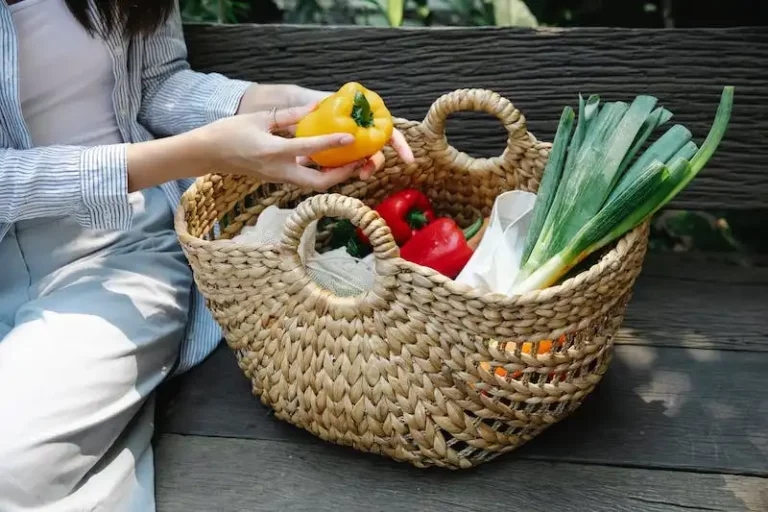When it comes to vegetables, there are a lot of different types to choose from. Two that often get confused are broccoli rabe and broccolini. While they may look similar, they have some distinct differences that are worth exploring.
Broccoli rabe, also known as rapini, is a leafy green vegetable that is part of the brassica family, which also includes broccoli, kale, and cauliflower. It has long, thin stalks with small broccoli-like heads and has a strong, slightly bitter taste. It is often used in Italian cuisine and is delicious when sautéed or steamed.
On the other hand, broccolini is a hybrid vegetable that is a cross between broccoli and Chinese kale. It has long, slender stalks with small, loose florets, and its taste is sweeter and more mild than broccoli rabe. It is often used in stir-fries and is a popular choice for roasting or grilling.
One of the key differences between the two vegetables is their appearance. While broccoli rabe has small, broccoli-like heads, broccolini has small, loose florets. Another difference is their taste – broccoli rabe has a slightly bitter flavor, while broccolini is sweeter and milder.
In terms of nutrition, both vegetables are packed with vitamins and minerals. Broccoli rabe is a great source of vitamins A, C, and K, as well as calcium and iron. Broccolini is also rich in vitamins A and C, and it is a good source of fiber. Both vegetables are low in calories and can be part of a balanced diet.
So, the next time you’re at the grocery store, be sure to take a closer look at the differences between broccoli rabe and broccolini. Whether you’re cooking up a stir-fry or roasting veggies, these unique vegetables are sure to add a special touch to your meal.
Image credit: Flickr
Broccolini vs Broccoli Rabe
When it comes to green vegetables, there is often confusion between broccolini and broccoli rabe. Actually, since they look similar, it’s easy to think they are the same vegetable. However, a closer look will help verify that they are actually different.
Broccolini and broccoli rabe are both greens that are often cooked and used in various dishes. They are best known for their broccoli-like appearance, with small, clustered heads and long stalks. However, the similarities between broccolini and broccoli rabe end there.
Broccolini, also known as baby broccoli, is a hybrid vegetable. Although it looks like broccoli, it actually has more in common with Chinese vegetables. Broccolini is a cross between broccoli and Chinese kale. When cooked, it has a sweeter taste compared to regular broccoli, making it a versatile ingredient that can be stir-fried, steamed, or roasted to perfection.
On the other hand, broccoli rabe, also known as rapini, is part of the brassica family. It is more closely related to turnips than broccoli itself. Broccoli rabe is leafy with fewer florets and has a bitter taste. It is best cooked when the leaves are tender and the stems are crispy. It pairs well with pasta, sautéed with garlic and olive oil, or used as a topping for pizza.
So, the biggest difference between broccolini and broccoli rabe is the taste and appearance of their own. While broccolini is a sweeter, broccoli-like vegetable, broccoli rabe has a bitter taste that is reminiscent of turnips. When it comes to cooking, broccolini is more versatile and can be used in a variety of dishes, while broccoli rabe has its own unique flavor profile that pairs well with Italian cuisine.
In conclusion, although broccolini and broccoli rabe might look similar, they are two distinct vegetables with their own unique characteristics. Whether you prefer the sweeter taste of broccolini or the bitter and delicious flavor of broccoli rabe, it all comes down to personal preference. So, next time you’re in the supermarket, don’t confuse these two greens – choose the one that suits your taste and enjoy all the culinary possibilities they offer!
Team Broccolini
When it comes to the real difference between broccoli rabe and broccolini, you’ve probably heard a lot about their similarities and differences. Although both vegetables are green and have a slight bitterness to their taste, they are actually quite different.
Firstly, let’s talk about broccolini. It is a hybrid vegetable that is a mix between broccoli and Chinese kale. Broccolini is best known for its long, tender-crisp stems and small flowering heads. It tastes delicious when cooked, whether you roast it, sauté it, or stir-fry it.
On the other hand, broccoli rabe is more closely related to regular broccoli. It has a stronger, more bitter taste and larger, leafier greens. Broccoli rabe is typically used in traditional Italian dishes, and it pairs well with garlic and spices.
In general, broccolini is a more balanced version of the two vegetables. It has a milder flavor compared to broccoli rabe, and it is easier to prepare and cook. While both broccolini and broccoli rabe are nutritious and offer health benefits, broccolini is often considered the more versatile option for cooking.
So, whether you’re a fan of the standard broccoli taste or enjoy the unique bitterness of broccoli rabe, broccolini is a great choice for those who want to enjoy the best of both worlds. It is a delicious and versatile vegetable that can be used in a variety of dishes. Next time you’re at the grocery store, give broccolini a try and join team broccolini!
Team Broccoli Rabe
In the battle of the greens, broccoli rabe definitely holds its ground. Although it is known by many names, including rapini and broccoli raab, this vegetable is actually more closely related to the turnip than to broccoli.
Broccoli rabe has long, slender stalks with small, leafy greens at the top. Its taste is slightly bitter and nutty, making it a delicious addition to any dish. This vegetable is incredibly versatile and can be enjoyed raw or cooked.
When it comes to cooking, broccoli rabe pairs well with many other ingredients. It is often featured in pasta dishes, stir-fries, and soups. Many people also enjoy sautéing it with garlic and olive oil for a simple and flavorful side dish.
If you’ve only ever tried broccoli rabe from a Chinese restaurant, you may be surprised to learn that it is actually a long-standing favorite in Italian cuisine. In fact, it is a staple in many traditional Italian dishes.
One of the biggest differences between broccoli rabe and broccolini is the size and appearance. While broccoli rabe has long stalks and leafy greens, broccolini looks more like a smaller, slimmer version of regular broccoli.
In terms of taste, broccolini is milder and sweeter compared to broccoli rabe. It has a balanced flavor that is less bitter and more palatable to some people. This makes broccolini a great option for those who find the bitterness of broccoli rabe too strong.
Although broccoli rabe and broccolini are two different vegetables, they do share some similarities. Both are members of the Brassica family, which includes cabbage, kale, and Brussels sprouts. Additionally, both are packed with nutrients and can be enjoyed in a variety of dishes.
So, whether you’re a part of team broccoli rabe or team broccolini, there’s no denying that these vegetables have their own unique qualities. The key is to try them both and see which one you prefer. After all, taste is a subjective matter, and what may be delicious to one person may not be to another.
When and How to Cook with Broccolini and Broccoli Rabe
Broccolini and broccoli rabe are two green vegetables that are often confused with each other, but they have some distinct differences that you need to know about. While both are part of the broccoli family, they have different flavors and textures that make them unique when cooked.
| Broccolini | Broccoli Rabe |
|---|---|
| Broccolini is a hybrid vegetable, a cross between standard broccoli and Chinese kale. It features long, tender-crisp stalks topped with small broccoli-like heads. | Broccoli rabe, also known as rapini, is a leafy green vegetable with small broccoli-like heads and long, thin stems. It is closer in flavor to kale and has a slightly bitter taste. |
| Broccolini can be used in a variety of ways. It is delicious when sautéed, roasted, or even grilled. The stalks and florets cook quickly, so be careful not to overcook them. Broccolini is a versatile vegetable that can be used in stir-fries, pasta dishes, or as a side dish. | Broccoli rabe is best when sautéed or blanched. Its bitter flavor is balanced out by cooking, and it pairs well with garlic, chili flakes, and olive oil. It can be added to pasta dishes, used as a pizza topping, or enjoyed as a nutritious side dish. |
Both vegetables are packed with nutrients and can be a great addition to a balanced diet. If you’re not sure which one to use in your recipe, think about the flavor and texture you want to achieve. If you prefer a milder taste and a more tender vegetable, go for broccolini. If you enjoy a slightly bitter and leafy green, broccoli rabe is the way to go.
Regardless of which one you choose, both broccolini and broccoli rabe are delicious and nutritious additions to your meals. Experiment with different cooking methods and flavor combinations to find out what suits your taste buds best!
What Pairs Best with Broccoli Rabe
When it comes to pairing broccoli rabe with other foods, the possibilities are endless. This versatile vegetable can be combined with a wide variety of flavors and ingredients to create delicious and satisfying dishes. Here are some ideas to get you started:
- Pasta: Broccoli rabe pairs perfectly with pasta. Whether it’s tossed with spaghetti or incorporated into a creamy pasta sauce, this flavorful green adds a lovely touch of bitterness to the dish.
- Garlic and Lemon: Broccoli rabe’s slightly bitter taste pairs beautifully with the zesty flavors of garlic and lemon. Sautéed broccoli rabe with garlic and a squeeze of lemon juice is a simple yet delicious way to enjoy this vegetable.
- Grilled Protein: Broccoli rabe can also be paired with various grilled proteins, such as chicken, steak, or fish. The slightly bitter greens complement the savory flavors of grilled meats perfectly.
- Red Pepper Flakes: If you like a little heat, adding red pepper flakes to broccoli rabe is a great choice. The spicy kick of the pepper flakes balances out the bitterness of the vegetable, creating a flavorful combination.
- Tomatoes: Broccoli rabe and tomatoes make a delicious pairing. Whether it’s in a pasta dish or a hearty soup, the sweetness of the tomatoes offsets the bitterness of the greens, creating a well-balanced flavor profile.
These are just a few ideas to get you started, but the truth is, broccoli rabe pairs well with a wide range of ingredients. The key to finding the perfect pairing is to experiment and find flavors that complement the slight bitterness of the vegetable. Whether you’re cooking up a pasta dish, a stir-fry, or a salad, adding broccoli rabe will take your meal to the next level.
What Pairs Best with Broccolini
When it comes to cooking with broccolini, it’s important to know what flavors and ingredients complement this delicious vegetable. While broccolini is a hybrid of broccoli and Chinese kale, it has its own unique taste and features that set it apart.
Broccolini is often described as having a milder and more tender flavor compared to traditional broccoli. It has small, elongated stalks and florets that resemble miniature broccoli. Although it’s not as bitter as broccoli rabe, broccolini still has a hint of bitterness, which can be balanced out with the right pairings.
One of the best ways to bring out the flavors of broccolini is to roast it. Add some olive oil, garlic, and a sprinkle of salt and pepper to enhance its natural taste. Roasting the broccolini will give it a slightly crisp texture and a caramelized sweetness, making it a great addition to any dish.
Another popular cooking method for broccolini is sautéing. Heat up some oil in a pan, add the broccolini, and cook until it becomes bright green and slightly tender. This method retains the vegetable’s vibrant color and allows it to maintain its slightly crunchy texture, which can be a pleasing contrast to other ingredients.
When it comes to pairing broccolini with other vegetables, there are many options to choose from. You can cook it alongside other green veggies like kale or spinach for a vibrant and colorful vegetable medley. The earthy flavors of these greens complement broccolini’s unique taste and add an extra dose of nutrients to your meal.
If you’re looking for a lighter, citrusy flavor, you can try pairing broccolini with lemon or orange zest. The tanginess of the citrus fruits cuts through the bitterness of broccolini and creates a refreshing combination. Adding a squeeze of lemon juice or a sprinkle of zest right before serving can bring out the best in both flavors.
Broccolini also pairs well with garlic, ginger, and soy sauce, which add a savory and umami taste to the vegetable. Team broccolini with these ingredients for a stir-fry that is packed full of flavor and easy to make. The vibrant colors and textures of the broccolini will make this dish not only delicious but also visually appealing.
Lastly, don’t be afraid to experiment with different herbs and spices to enhance the flavors of broccolini. Whether you prefer the earthiness of thyme or the heat of chili flakes, adding a pinch of your favorite herbs and spices can take your broccolini dishes to the next level.
In general, broccolini is a versatile vegetable that can be paired with a wide range of ingredients to create delicious and balanced meals. Whether you choose to roast, sauté, or stir-fry it, broccolini is sure to add a healthy and flavorful touch to any dish.


